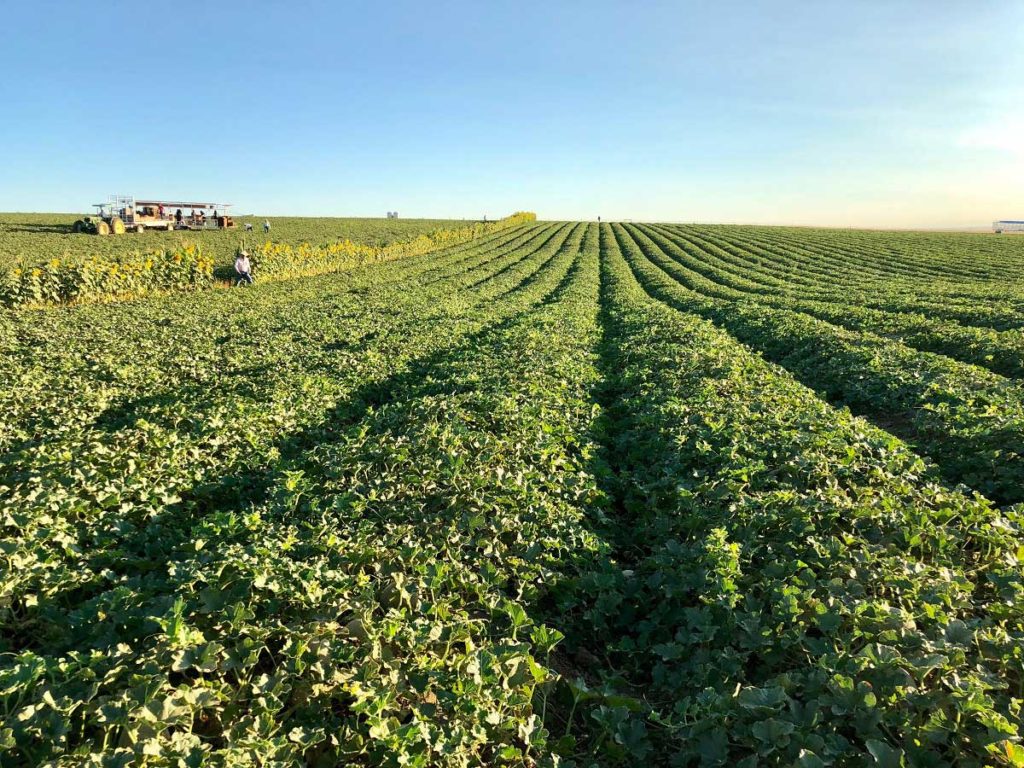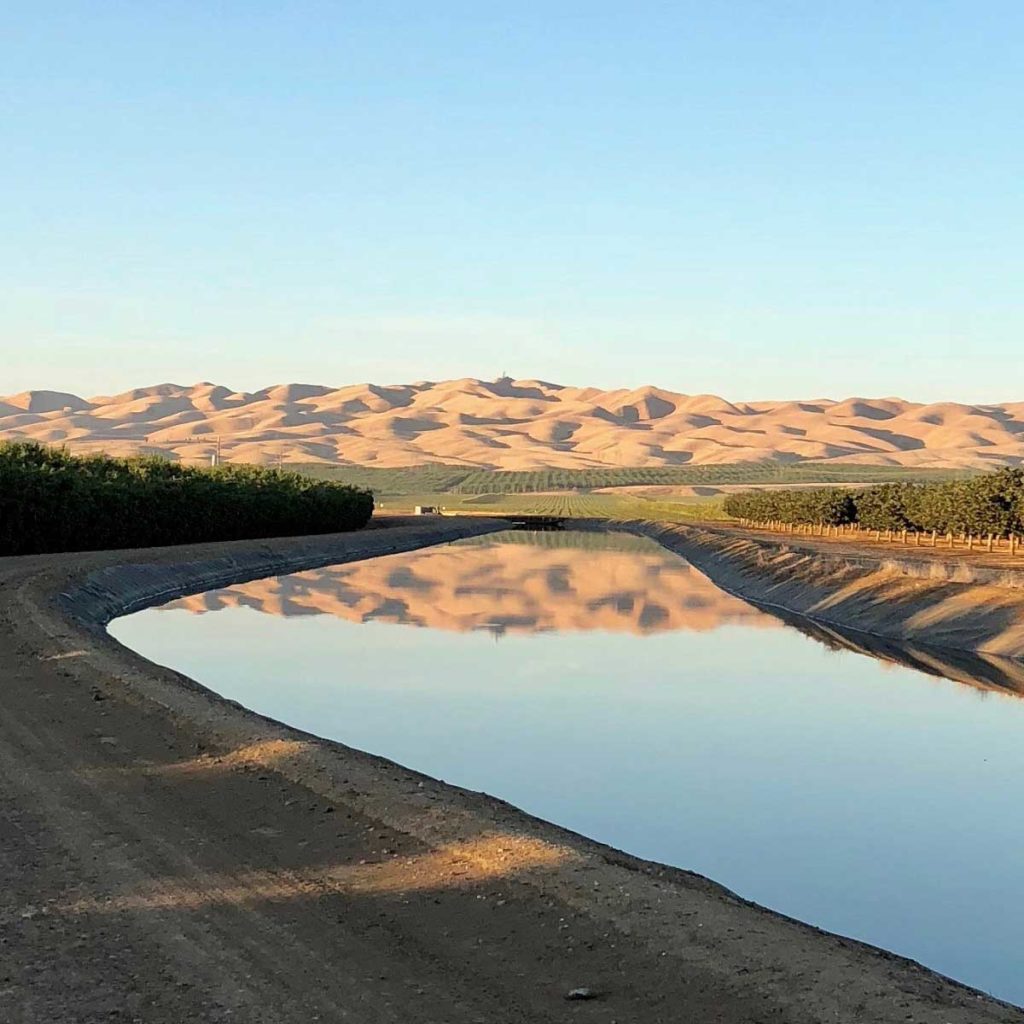Two of our most important resources are land and water. These are the medium in which we grow our crops. Because they are limited resources, we take on a role of stewardship with much responsibility.
We take great care in keeping our land healthy and productive. Our soils are naturally arid alluvial fans of the eastern side of California’s Coastal Range. They normally have low levels of organic matter because of a long history of sparse vegetation and can be high in alkalinity (pH >7.5). Cultivation and irrigation can change the properties of the soil.
Because our soil and our irrigation water contain salts, we continually monitor these levels by soil analysis.
The use of sprinkler irrigation helps keep salts below the root zone.
To alleviate the alkalinity and salinity, we apply gypsum (CaSO4·2H2O), mined from naturally occurring sites to our soils periodically. Gypsum helps replace the harmful sodium salts in the soil. It can also help lower the pH of the soil to a more neutral range better for growing crops.

Organic matter is a complex, but beneficial, component of the soil. It naturally comes from vegetation that has grown there. Organic matter can be lost by intensive mechanized farming. There are several practices we have adopted to allow more build-up of organic matter.
Because tillage can destroy organic matter, we have minimized, and in some cases, as in our almond orchards, even eliminated tillage.
The prunings from our almond trees are no longer burned as in the past. They are shredded and deposited back on the ground as mulch.
Our asparagus fern, which was also burned in the past, is also shredded and kept as mulch.
In our organic melons, we utilize cover crops to build up the soil. These cover crops produce huge amounts of organic matter as they also add nutrients to the soil.
Our fertility program has also been shifted from synthetic fertilizers to the use of composted plant and animal waste.
All these changes, we believe, have not only been positive for our soils, but they also reduce our carbon footprint.
Water has been the lifeblood of agriculture in our valley. Before irrigation was developed, farming was pretty much limited to dry land production of small grains. Over one hundred years ago, the rivers of the Central Valley were tapped for water for horticultural crops. Eventually, the Central Valley Project developed a system of water-storing dams and canals to deliver the precious resource to farms and cities throughout the state. While this project allowed the state to bloom into the most diverse and productive agricultural system in the world, it has become a source of great contention. Please read about our situation in the website of the California Farm Water Coalition – Home.

Because water has always been a scarce resource in our state, farms have evolved in many ways to get the most of their water. On our farm, every available drop of water is used for the beneficial use of our crops. No water that is delivered to our farm ever leaves it except through our crops that are harvested and through evapotranspiration (the combination of water transpired from vegetation and evaporated from the soil and plant surfaces).
We target our irrigation only in our crop’s root zone.
Water is metered through the most efficient methods of irrigation, sprinkler, and drip (micro), to get the best uniformity and control.
Every plant in the field gets the exact same amount of water and only the in the amount that we calculate to satisfy the crop water requirements.
In some of our fields, the drip irrigation lines are buried in the soil to further minimize evaporation.
We contract an irrigation consultant, Rob Ude Crop Consulting, who uses scientific information to program crop water requirements, hi-tech sensors to monitor soil moisture and temperatures, and good old-fashioned checking the fields with a shovel.
Our goal is to grow the maximum yield with the least amount of water, but ultimately produce the best quality fruits, nuts, and vegetables.